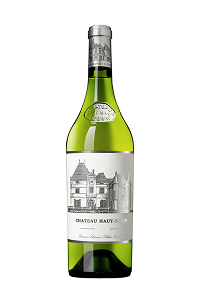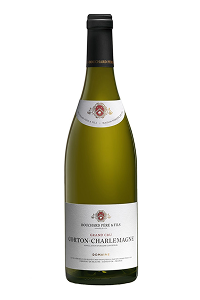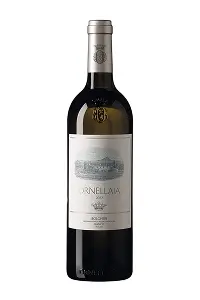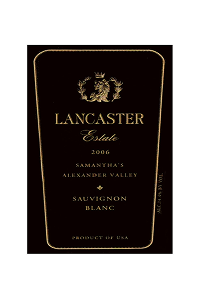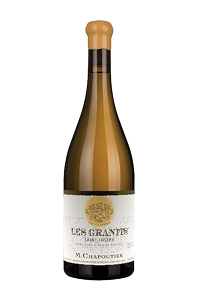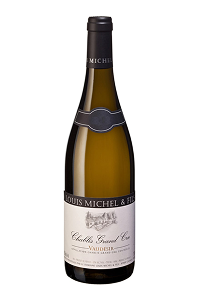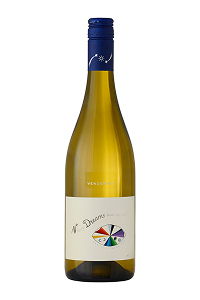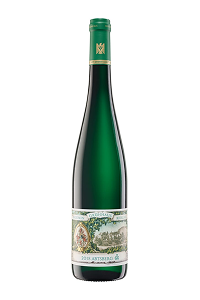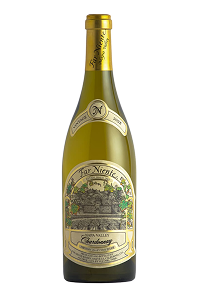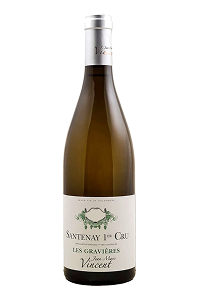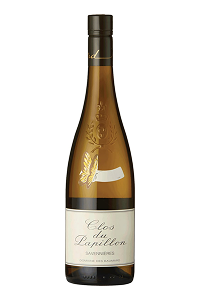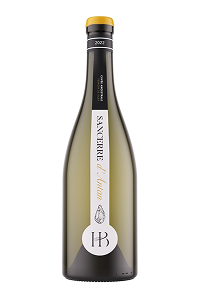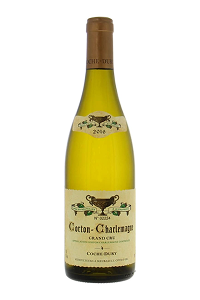Dry white wine: picks and trends to watch in 2025
Did you know most white wines we drink are actually dry? Explore zesty citrus bursts and crisp mineral notes with our guide. We’ll help you navigate dry white wine trends and discover perfect food pairings.
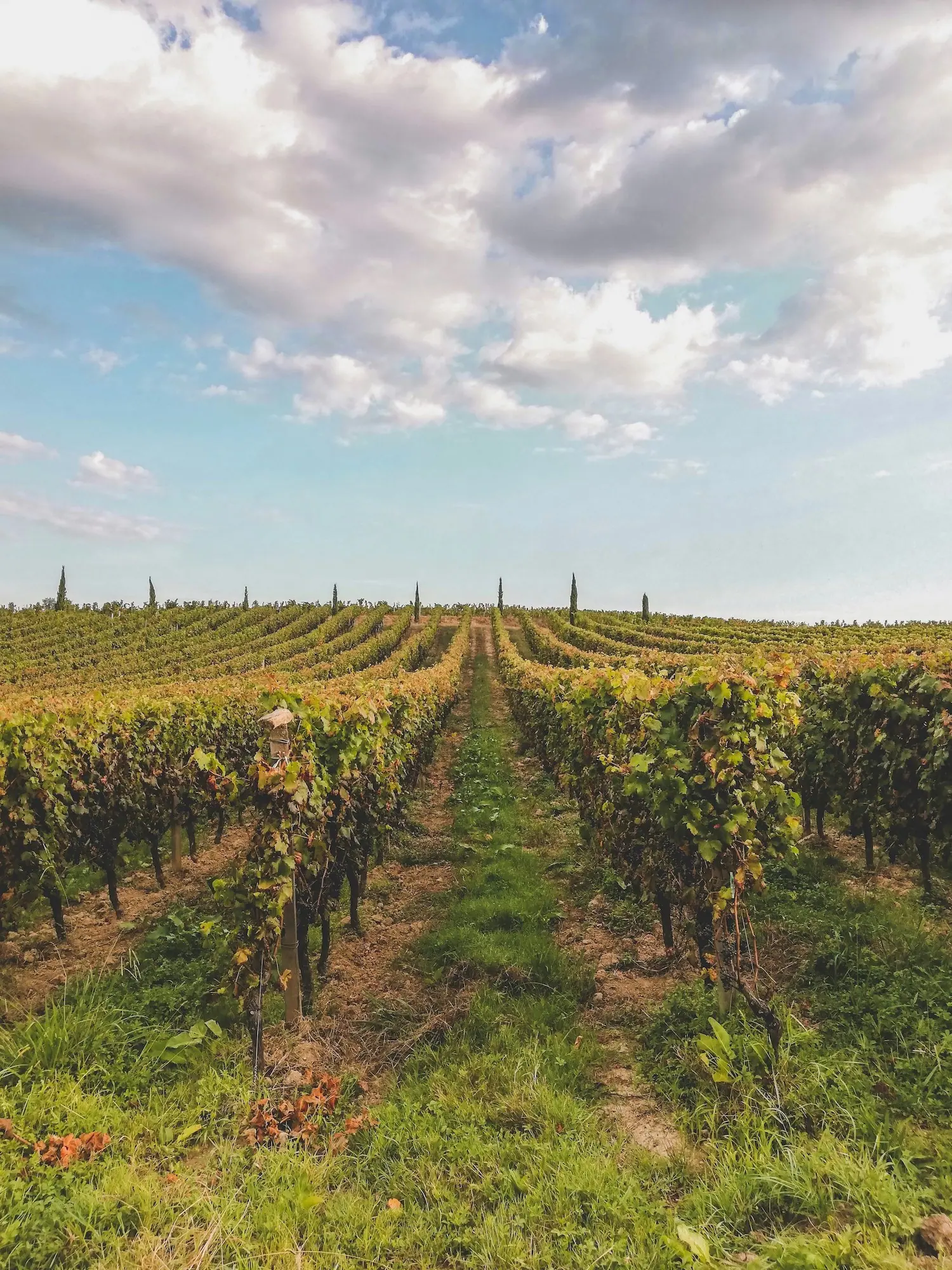
By
Last updated:
Table of Contents
10 Dry white wine recommendations you’ll love
Blanc – Chateau Haut-Brion 2021
France
Chevalier-Montrachet Les Demoiselles Grand Cru – Louis Latour 2019
France
Corton-Charlemagne Grand Cru – Bouchard Père & Fils 2022
France
Samantha’s Sauvignon Blanc – Lancaster Estate 2006
California
Saint-Joseph Les Granits Blanc- M.Chapoutier 2021
France
Chablis Vaudésir Grand Cru – Domaine Louis Michel et Fils 2017
France
Abtsberg Riesling Grosses Gewachs – Maximin Grunhaus 2018
Italy
Chardonnay – Far Niente 2023
California
These 10 dry white wine recommendations have been chosen for perfect balance and authentic regional character. It takes you from France’s mineral Chardonnays to California’s vibrant Sauvignon Blancs, through Italy’s elegant Pinot Grigios and onto Germany’s precise Rieslings.
But what makes a dry white wine stand out?
- Balance: the harmony between acidity, alcohol and fruit.
- Typicity: how well the wine expresses its grape variety and origin.
- Complexity: the depth and evolution of flavors.
- Finish: the length and pleasing persistence of taste.
Must Know: A good dry white wine should show tension on the palate, meaning a precise and linear acidity that carries the wine through from attack to finish. It should avoid excess oak or residual sugar and maintain clarity in aroma and texture.
Professional critics such as Robert Parker use the TWA rating system (a 50-100 scale) to evaluate these characteristics rewarding wines that showcase both technical excellence and terroir.
What is dry white wine and how is it made?
Dry white wine refers to any white wine with less than 4 grams/liter of residual sugar, resulting in a crisp and refreshing wine style rather than sweet. The term “dry” means most of the grape’s natural sugars have been fermented into alcohol allowing a bright acidity to develop.
Dry white wine production involves a series of deliberate choices that shape the final character in the glass. Let’s see in detail how dry white wines are made.
- Stainless steel fermentation: preserves the wine’s purity keeping the wine fresh and vibrant with fruity flavors.
- Oak barrel fermentation/aging: introduces layers of richness adding delicious vanilla and spice notes while creating a creamy texture.
- Malolactic fermentation (MLF): softens the wine’s sharp acidity and introduces smooth buttery flavors.
- Lees aging: the secret behind those irresistible brioche like aromas, imparts a luxurious texture and complex aromas.
- Skin contact (short maceration): elevates aromatic complexity through brief mingling of skin and juice, unlocking floral accents and earthy tones.
Understanding dry white wine by body and texture
In wine, the term body refers to the weight and fullness a wine creates on the palate. It shapes how it feels as you drink: some offer a light, crisp sensation while others are fuller, richer and more layered.
The body is influenced by factors like grape variety, temperature during fermentation, alcohol level, aging technique (oak vs. steel) and climate. Understanding body and texture helps predict how a wine will behave alongside food, how it will age and the sensory experience it will deliver in the glass. Let’ see together how the difference in body shape the wine’s final taste:
| Body Type | Dry White Wine Top Picks | Grape Varieties | Structure & Flavor |
|---|---|---|---|
| Light bodied | Castel Ringberg Sauvignon 2022 – Elena Walch | Sauvignon Blanc | Light, sharp, linear and brisk mouthfeel. High acidity, low alcohol |
| Medium bodied | Puligny-Montrachet Les Referts Premier Cru 2022 – Louis Latour | Chardonnay | Medium bodied, balanced weight, moderate acidity, slight roundness from oak integration |
| Full bodied | Ermitage de l’Orée Blanc 2022 – M.Chapoutier | Marsanne | Full body with dense and layered structure, fresh acidity and a strong mineral backbone. Flavors of ripe yellow fruit |
Light bodied dry white wine
Light bodied dry white wine is fresh and delicate, with crisp acidity and a clean, refreshing finish. It typically features notes of citrus, green apple and white flowers, making it ideal for light meals, salads, seafood or as an aperitif. These wines are perfect when you fancy something subtle, easy drinking and elegant.
Try a classic: Santenay Les Gravieres Premier Cru Blanc 2022 by Jean-Marc Vincent (France)
Medium bodied dry white wine
Medium bodied dry white wine balances richness and freshness with vibrant acidity and a rounded mouthfeel. Flavors include apple, pear, citrus and subtle oak or minerals. Versatile with food, great with roasted chicken, creamy pasta or grilled veggies. Structured yet refreshing.
Try a classic: Sauvignon Blanc 2016 by Patland Estate Vineyard (California)
Full bodied dry white wine
Full bodied dry white wine offers rich, intense flavors with a powerful, velvety texture. Think ripe peach, tropical fruit, vanilla and toasted oak balanced by firm acidity. These wines pair beautifully with lobster, roasted pork or creamy risottos. Bold yet refined, they deliver depth and a long, luxurious finish.
Try a classic: Clos du Papillon Savennieres 2018 by Domaine des Baumard (France)
White wine dry scale made simple
Knowing where a wine falls on the white wine dry scale can help you anticipate its taste and balance. This scale measures the amount of residual sugar left in the wine after fermentation. The less sugar, the drier the wine!
Here’s a breakdown of the white wine dryness scale levels:
- Bone dry white wine: is the driest white wine category, searingly crisp and linear.
- Semi dry white wine: is lightly sweet but still fresh and balanced.
- Dry white wine: still a crisp dry white wine but with slightly softened edges.
- Off dry white wine: presents a subtle sweetness while still retaining some residual acidity.
Note: If you are trying to understand which white wines are dry, keep in mind that most quality labels fall in the bone dry to the off dry range. However, perception also depends much also on acidity, alcohol and fruit character: a wine can feel drier or sweeter than it is analytically!
Here are some examples of dry white wine according to the dryness scale:
| Dry white wine scale | Dry White Wine Top Picks | Common Varietals | Residual Sugar (g/L) |
|---|---|---|---|
| Bone Dry | Chablis Les Clos Grand Cru 2017 – William Fevre | Chablis, Sancerre | 0-1 g/L RS |
| Dry | Roche Calcaire Pinot Gris 2018 – Zind-Humbrecht | Chardonnay, Pinot Grigio | 1-4 g/L RS |
| Semi Dry | Semi Dry Cuvée Classique Riesling 2023 – Domaine LeSeurre | Pinot Blanc, Riesling | 4-12 g/L RS |
| Off Dry | Gewurztraminer Grand Cru Brand 2020 – Albert Boxler | Riesling, Gewürztraminer | 12-30 g/L RS |
The best food pairings for dry white wine
The secret to dry white wine food pairing lies in creating balance. The wine’s body determines its ideal culinary match. Light bodied whites shine with delicate dishes like oysters, sushi or summer salads, while fuller styles stand up to richer flavors like roasted poultry, creamy pasta or soft cheeses.
To get the most out of every pairing, start by choosing from the best dry white wines for drinking below, those that match both your palate and your plate!
| Food | Best Dry White Wine | Type & Structure |
|---|---|---|
| Raw oysters, ceviche, goat cheese, green salads, sushi | Quarz Sauvignon Blanc 2022 – Cantina Terlan | Intense medium body with bright acidity |
| Light appetizers, fresh cheeses, salads | Capichera Santigaini Vermentino 2011 – Capichera | Light, fresh, delicate |
| Roasted chicken, grilled vegetables | Unoaked Chardonnay 2022 – William Selyem Winery | Medium bodied, balanced |
| Creamy pasta, risotto | Bourgogne Clos Du Château Chardonnay 2022 – Château de Meursault | Medium to full bodied, rich |
| Aged Cheese, Parmigiano Reggiano, Cheddar, Gouda | Ex Voto Ermitage Blanc 2001- E.Guigal | Full bodied, complex |
| Spicy Asian cuisine, shellfish | Wehlener Sonnenuhr Dry Riesling Old Vines Grosses Gewachs 2015 – S.A. Prum | Medium bodied, aromatic |
| Hearty fish dishes, seafood stews | Chablis Fourchaume Premier Cru 2022 – Simonnet-Febvre | Medium bodied, refreshing |
| Comfort food, roasted meats | Puligny-Montrachet 2023 – Louis Latour | Full bodied, round |
Dry white wine types: how the grape shapes the glass
Dry white wine types are remarkably diverse, all while maintaining the essential characteristic of minimal residual sugar.
The grapes directly influence dry white wine’s key flavors, acidity and structure. The most important dry white wine grapes include:
- Sauvignon Blanc: used also in other wine styles, often delivers zesty citrus green apple and herbal notes that shine in crisp wines.
- Chardonnay: is highly adaptable and capable of producing wines that range from taut and mineral to plush and creamy according to the wine making technique.
- Pinot Grigio: used to make dry light bodied wines with a clear profile and refreshing flavors.
- Riesling: is priced for its natural high acidity and for its layered expressions of citrus, stone fruit and subtle minerality.
- Vermentino: is light and saline with a refreshing finish that shows notes of citrus zest and mediterranean herbs.
- Viognier: adds richness without heavy oak, bringing lush stone fruit and honeysuckle flavors.
- Chenin Blanc: is exceptionally versatile and used in wines that balance vibrant acidity with refreshing flavors of grapefruit, quince and apple.
Beyond the dry white wine grape itself, region plays a crucial role: climate, soil type and altitude affect ripeness, acidity and aromatic expression. These combined factors create the broad stylistic range seen among the best dry white wines even within the same varietal.
Italian dry white wine: from the mountains to the Mediterranean
Italian dry white wine heritage is as diverse as its regions, offering crisp, mineral driven and textured styles. From the alpine freshness of the north to the sun kissed Mediterranean coast, Italian whites balance vibrant acidity with distinctive terroir expression.
Some of the most famous dry white wines from Italy include:
- Pinot Grigio: mainly coming from regions like Friuli and Veneto, is known for its light, crisp and refreshing style.
Soave: primarily from Veneto, is made mainly from Garganega grapes and offers delicate floral and mineral notes. - Verdicchio: mostly from the Marche region, is valued for its bright acidity and subtle almond hints.
Falanghina: from the southern region of Campania, brings fresh citrus and herbal aromas and a medium body.
→ Our pick of Italian dry white wine: Ca’ di Alte Pinot Grigio 2016
Italy is also famous for dry sparkling white wine such as:
- Prosecco: one of the most celebrated Italian wines worldwide, is a light and fruity sparkling wine from Veneto made from Glera grapes.
- Franciacorta: a less known high-quality sparkling wine that fiercely rivals Champagne thanks to the winemaking technique using the traditional method.
Fun fact: Italy’s winemakers are quietly divided about oak in white wines. While traditionalists swear by stainless steel to preserve vibrant fruit (think crisp Pinot Grigio) modernists use barrels for richer textures.
Dry French white wine: the classics from north to south
While France’s reds often dominate conversations, dry French white wine is equally legendary offering a masterclass in terroir expression. Here some of the top dry white wines from France:
- Chablis (Burgundy wine region): pure Chardonnay with flinty minerality.
- Sancerre (Loire): Sauvignon Blanc at its most sophisticated.
- Pouilly-Fumé (Loire): smoky, gunflint expressions of Sauvignon Blanc.
- White Bordeaux: often blends of Sémillon/Sauvignon Blanc with waxy texture.
- Alsace Riesling (Dry styles): powerful and richly aromatic.
- White Burgundy (Côte de Beaune): benchmark oaked Chardonnay.
→ Our pick of dry French white wine: Henri Bourgeois Sancerre d’Antan 2022
Popular French dry sparkling wines include:
- Champagne: the world famous traditional method sparkling wine made primarily from Chardonnay, Pinot Noir and Pinot Meunier.
- Crémant: traditional method sparkling wines produced in several French regions, offering excellent quality at a generally more accessible price.
Dry white wine price for collector vs casual sippers
Beyond their immediate pleasure, dry white wines span a wide price spectrum from $15 weekday bottles to rare, age-worthy icons that can command several thousand dollars per bottle.
But what drives the dry white wine price? Especially at the high end, several key factors come into play:
- Aging potential: wines with a 10-50+ year lifespan.
- Critical acclaim: best rated dry white wines (95+).
- Limited production: bottlings under 500 cases.
- Historic terroir: renowned vineyard sites (e.g. Grand Cru, single vineyard).
- Investment performance: wines with a history of consistent auction are considered blue-chip assets by collectors.
And while casual drinkers often look for dry whites that are enjoyable now, collectors are willing to embrace a higher dry white wine cost for reasons that go beyond taste:
- Many top releases sell out within hours.
- Each bottle carries the narrative of its vineyard, vintage and winemaker.
- Unlike art or watches, they offer the unique pleasure of being both collectible and consumable.
→ Our top collector’s pick: Domaine Coche-Dury Corton-Charlemagne Grand Cru 2016, a rare, 5-star Chardonnay white with outstanding structure, depth and cellar potential.
Corton-Charlemagne Grand Cru – Domaine Coche-Dury 2016 – France
Why 50° is the perfect serving temperatureH3:
The ideal dry white wine serving temperature varies based on body, structure, and winemaking style. For most of them, 50°F is the perfect temp. But not all dry whites are the same!
Small adjustments can significantly enhance their expression:
- Dry crisp white wine (Sauvignon Blanc, Albariño): 43-46°F.
- Medium bodied styles (Pinot Grigio, Chardonnay): 46-50°F.
- Barrel-aged dry whites (White Burgundy, Semillon): 50-5°F.
Serving temperature interacts with other technical traits like alcohol content (ABV), acidity and residual sugar, all of which affect mouthfeel and perception of balance.
Below is a table featuring prominent names of dry white wine and their key characteristics.
| Best Dry White Wine | Tannin / Acidity | Serving Temp | Aging Potential |
|---|---|---|---|
| 32 Winds Sauvignon Blanc – Compass Winds 2015 – 13.1% ABV | Low tannin, high acidity | 46-50°F | 3-5 years |
| Forster Pechstein G.C. Dry Riesling – Bürklin-Wolf 2014 – 13% ABV | No tannin, very high acidity | 50-52°F | 15-25+ years |
| Block 10 Chardonnay – Dry Creek Vineyard DCV Estate 2022 – 14.2% ABV | Low tannin, medium-high acidity | 50-54°F | 8-12 years |
| Dry Stack Vineyard Sauvignon Blanc – Bevan Cellars 2022 – 14.5% ABV | Low tannin, medium-high acidity | 50-52°F | 5-7 years |
| Gewürztraminer – Dry River Wines Lovat 2020 – 13.3% ABV | No tannin, medium acidity | 50-54°F | 7-10 years |
How to correctly store and preserve a bottle of dry white wine?
Proper storage preserves the freshness, acidity and aging potential of dry white wines. Follow these guidelines on how to store and keep dry white wine:
- Store at a steady 45-55°F.
- Lay bottles horizontally to keep corks moist.
- Protect from direct sunlight and bright artificial light.
- Avoid sudden temperature changes.
- Reseal and refrigerate promptly after opening.
- Consume opened bottles within 3 to 5 days.
Note: while casual drinkers can store wines in a cool, dark spot and consume within months, collectors require controlled environments to preserve aging potential over years or decades.
A beginner’s guide to dry white wine
If you’re wondering what white wine is considered dry naturally, look for varieties like Sauvignon Blanc, Pinot Grigio and unoaked Chardonnay which typically have minimal residual sugar and bright acidity. Start by identifying your taste preference: do you like crisp and refreshing or rich and creamy? Also, check the wine’s region: cooler climates yield higher acidity, warmer climates bring rounder fruit flavors!
Here are some 4 fundamental tips for choosing the best dry white wines for drinking:
- Start with lighter bodied wines.
- Match wine weight to your food.
- Try wines from cooler regions for higher freshness.
- Explore different dry white wine vintages.
Bonus tip: check out these 10 questions about wine all beginners have but are afraid to ask. Don’t forget: learning about wine is all about curiosity not perfection.
FAQs Dry white wine
Which white wine is dry?
Dry white wines are wines with little to no residual sugar. Popular naturally dry white wines include Sauvignon Blanc, Pinot Grigio, Chardonnay, Albariño and dry styles of Riesling and Chenin Blanc. These wines are crisp, refreshing and food friendly, ideal for pairing with seafood, vegetables or light pasta dishes.
Which white is drier, Sauvignon Blanc or Pinot Grigio?
Both Sauvignon Blanc and Pinot Grigio are typically dry but Sauvignon Blanc is generally considered slightly drier due to its higher acidity and leaner profile. Pinot Grigio can feel a bit fruitier. However, dryness may vary by region: cooler climates usually produce the driest expressions of both.
Is Chardonnay a dry wine?
Yes, Chardonnay is almost always a dry white wine especially when fermented to completion with no residual sugar. The dryness level can vary with winemaking style: unoaked versions like Chablis are crisp and mineral while oaked Chardonnays are richer and creamier. Both styles remain dry unless specifically labeled otherwise.
What type of wine is dry white wine?
Dry white wine refers to white wines with minimal residual sugar, usually under 4 grams per liter. These wines taste crisp rather than sweet. Common types include Sauvignon Blanc, Chardonnay, Pinot Grigio, Albariño and dry Riesling. They range from light and citrusy to full bodied and structured, depending on grape and region.
What is the best dry white wine?
The best dry white wine often depends on your taste, budget and purpose. Some bottles consistently earn top ratings for their complexity, balance and aging potential. A prime example is the Blanc 2021 from Château Haut-Brion (France) which is rated 5/5 and known for its layered aromas of ripe golden fruits, citrus, white flowers and subtle spice.
Which white wine is drier?
Among common white wines Pinot Grigio is typically the driest, followed by Sauvignon Blanc, Chardonnay and Albariño. That said, dryness also depends on winemaking techniques and climate. Wines from cooler regions like the Loire Valley or northern Italy tend to have higher acidity and a drier finish.
Do organic dry white wines contain sulfites?
Yes, even organic dry white wines can contain sulfites. Sulfites occur naturally during fermentation and small amounts are often added to preserve freshness and stability. “Organic” means no synthetic pesticides or chemicals but unless labeled “no added sulfites” these wines still contain low levels of them.
Is dry white wine good for you?
Dry white wine, when consumed in moderation, may offer certain health benefits such as lower sugar content and fewer calories compared to sweeter wines. It also contains antioxidants, especially in wines made with minimal intervention. However, like all alcohol, health effects depend on moderation, lifestyle and individual health factors.
Can dry white wine be aged?
Yes, some dry white wines age exceptionally well, particularly those with high acidity and structure. Wines like white Burgundy, dry Riesling, Chenin Blanc and even some Vermentino can evolve beautifully over 10-20+ years but most everyday dry whites are meant to be enjoyed within a few years of release.
How long can dry white wine last once opened?
Once opened, dry white wine can last between 3 to 5 days in the refrigerator when properly sealed. Use a wine stopper or vacuum pump to slow oxidation. Lighter bodied wines like Pinot Grigio fade faster while fuller styles like oaked Chardonnay can hold their structure slightly longer.
How many calories are in dry white wines?
A standard 5 oz glass of dry white wine contains approximately 110-130 calories, depending on alcohol content. Because dry whites have little residual sugar, they’re generally lower in calories than off dry or sweet wines. Wines with lower ABV (around 11-12%) tend to be the most calorie conscious choices.
